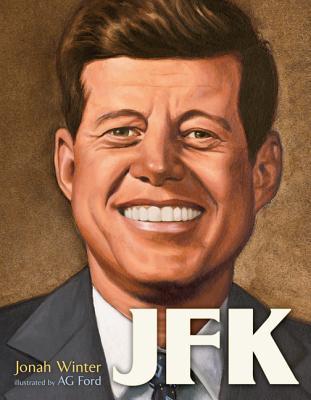On Sunday, February 16, I hosted an #nctechat with @anterobot on Formative Assessment. The conversation focused on the new position statement from NCTE: Formative Assessment That Truly Informs Instruction. It is a document that we think can make a difference and the chat was an energized one with so many powerful ideas.
I was a part of the group that helped create the position statement on Formative Assessment and one thing we hoped while crafting it is that it gives teachers a way to change the conversation around formative assessment. We want this document to help us get back to what we know is right about assessment and how it can impact our instruction. The #nctechat was one way to begin the conversation and many participants had plans to take the position statement to colleagues, administrators and community members.
At the end of the chat, several people committed to writing posts about Formative Assessment as a follow-up to the chat. I offered to collect the posts in one place so that the conversation around this topic and document can continue to grow. If you missed the chat, you can read the archives of the chat here. And regardless of whether or not you participated in the chat, we think these blog posts are important as a way to continue an ongoing conversation about the topic of true Formative Assessment. So, take some time to read the posts, make comments, connect with the bloggers and comment lots.
Let's continue this conversation!
Jennifer Serravallo (@jserravallo) writes "What's in a Name?" .
Jennifer Brittin (@jenbrittin) writes "The Proof is in the Pudding, Right?"
Beth Shaum (@BethShaum) writes Formative Assessment That TRULY Informs Instruction
Megan Skogstad (@megskogie) writes Formative Assessment in Order to Maximize Student and Teacher Learning
Justin Stygles (@JustinStygles) writes Formative Assessment-Making Sense Through Practice
Carol Varsalona writes (@cvarsalona)Formative Assessment Can Be the Game Changer for You
Kathleen Jasper (@JasperKathleen) and Lisa Scherff(@lisascherff) write A Chat About Formative Assessment at CoversationED (@conversationed)
Kristine Mraz (@MrazKristine) writes Charts as Pathways to Success
Clare Landrigan and Tammy Mulligan (@ClareandTammy) write Using Our Students' Perspectives to Triangulate Assessment
Katherine Sokolowski (@katsok) writes Thinking About Formative Assessment
Cathy Mere(@CathyMere) writes Formative Assessment that Informs Instruction
Renee Boss (@renee_boss) writes Formative Assessment--A Process--Not a Thing
Darcy Oberdofer (@DarcyJObe), Amanda TenBrink, Steve Seward and Andrew Smith (@smithand1015) write Formative Assessments: A Cornerstone to Math Workshop
Kim Jasper (@KimChismJasper) writes Formative Assessment in the Writing Process
Amy Cody (@acodyclancy) writes Using "Public Response" to Formatively Assess: Is it working?
I was a part of the group that helped create the position statement on Formative Assessment and one thing we hoped while crafting it is that it gives teachers a way to change the conversation around formative assessment. We want this document to help us get back to what we know is right about assessment and how it can impact our instruction. The #nctechat was one way to begin the conversation and many participants had plans to take the position statement to colleagues, administrators and community members.
At the end of the chat, several people committed to writing posts about Formative Assessment as a follow-up to the chat. I offered to collect the posts in one place so that the conversation around this topic and document can continue to grow. If you missed the chat, you can read the archives of the chat here. And regardless of whether or not you participated in the chat, we think these blog posts are important as a way to continue an ongoing conversation about the topic of true Formative Assessment. So, take some time to read the posts, make comments, connect with the bloggers and comment lots.
Let's continue this conversation!
Jennifer Serravallo (@jserravallo) writes "What's in a Name?" .
Jennifer Brittin (@jenbrittin) writes "The Proof is in the Pudding, Right?"
Beth Shaum (@BethShaum) writes Formative Assessment That TRULY Informs Instruction
Megan Skogstad (@megskogie) writes Formative Assessment in Order to Maximize Student and Teacher Learning
Justin Stygles (@JustinStygles) writes Formative Assessment-Making Sense Through Practice
Carol Varsalona writes (@cvarsalona)Formative Assessment Can Be the Game Changer for You
Kathleen Jasper (@JasperKathleen) and Lisa Scherff(@lisascherff) write A Chat About Formative Assessment at CoversationED (@conversationed)
Kristine Mraz (@MrazKristine) writes Charts as Pathways to Success
Clare Landrigan and Tammy Mulligan (@ClareandTammy) write Using Our Students' Perspectives to Triangulate Assessment
Katherine Sokolowski (@katsok) writes Thinking About Formative Assessment
Cathy Mere(@CathyMere) writes Formative Assessment that Informs Instruction
Renee Boss (@renee_boss) writes Formative Assessment--A Process--Not a Thing
Darcy Oberdofer (@DarcyJObe), Amanda TenBrink, Steve Seward and Andrew Smith (@smithand1015) write Formative Assessments: A Cornerstone to Math Workshop
Kim Jasper (@KimChismJasper) writes Formative Assessment in the Writing Process
Amy Cody (@acodyclancy) writes Using "Public Response" to Formatively Assess: Is it working?























